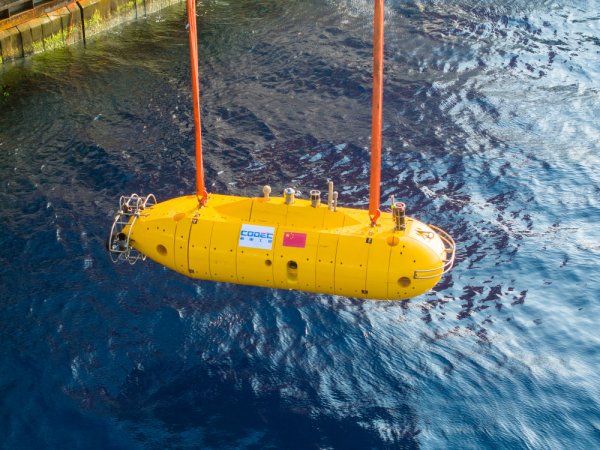The “Haiwei” system, an intelligent monitoring solution for deepwater pipeline installation, successfully completed offshore testing on May 15.

China’s intelligent monitoring system for deepwater pipeline installation undergoes sea trial. [Photo/sasac.gov.cn]
The system adopts a smart deepwater monitoring approach that integrates an unmanned surface vessel (USV), an autonomous remotely operated underwater vehicle (AROV), a relay system, and optical communication. Its successful sea trial is a significant step forward in advancing the intelligent and unmanned development of China’s deepwater offshore oil and gas equipment.
Subsea pipelines — often referred to as the “lifeline of offshore energy” — are critical infrastructure for marine oil and gas development. In deepwater pipeline laying operations, the initial point where the pipeline contacts the seabed is called the touchdown point. The motion of this point directly affects the structural integrity and safety of the pipeline, making its monitoring one of the most critical aspects of pipeline installation.
Traditionally, when laying pipelines at depths exceeding 200 meters, a multi-purpose support vessel is required to deploy an ROV to monitor the touchdown point. This approach not only increases the risk of vessel interference but also significantly raises operational costs. The “Haiwei” system is designed to address these challenges by providing a safer, more cost-effective solution and delivering reliable data to support efficient pipeline installation.
The system is designed to operate at depths of up to 1,500 meters. It features the 18-meter-long USV, which serves as a surface base station supplying energy and control signals to the subsea relay and optical communication units. The 1,500-meter-rated deepwater AROV boasts a current resistance of up to 3 knots and an endurance of up to 10 days. It can autonomously identify and track high-definition images of the touchdown point and transmit the data in real time to the command center via underwater optical wireless communication.
Jointly developed by Offshore Oil Engineering Co., Ltd., a subsidiary of China National Offshore Oil Corporation, alongside leading domestic research institutes and enterprises, the system’s core parts have undergone multiple high-pressure tests, and the touchdown point recognition accuracy has reached an impressive 95 percent.
(Executive editor: Yuan Ting)